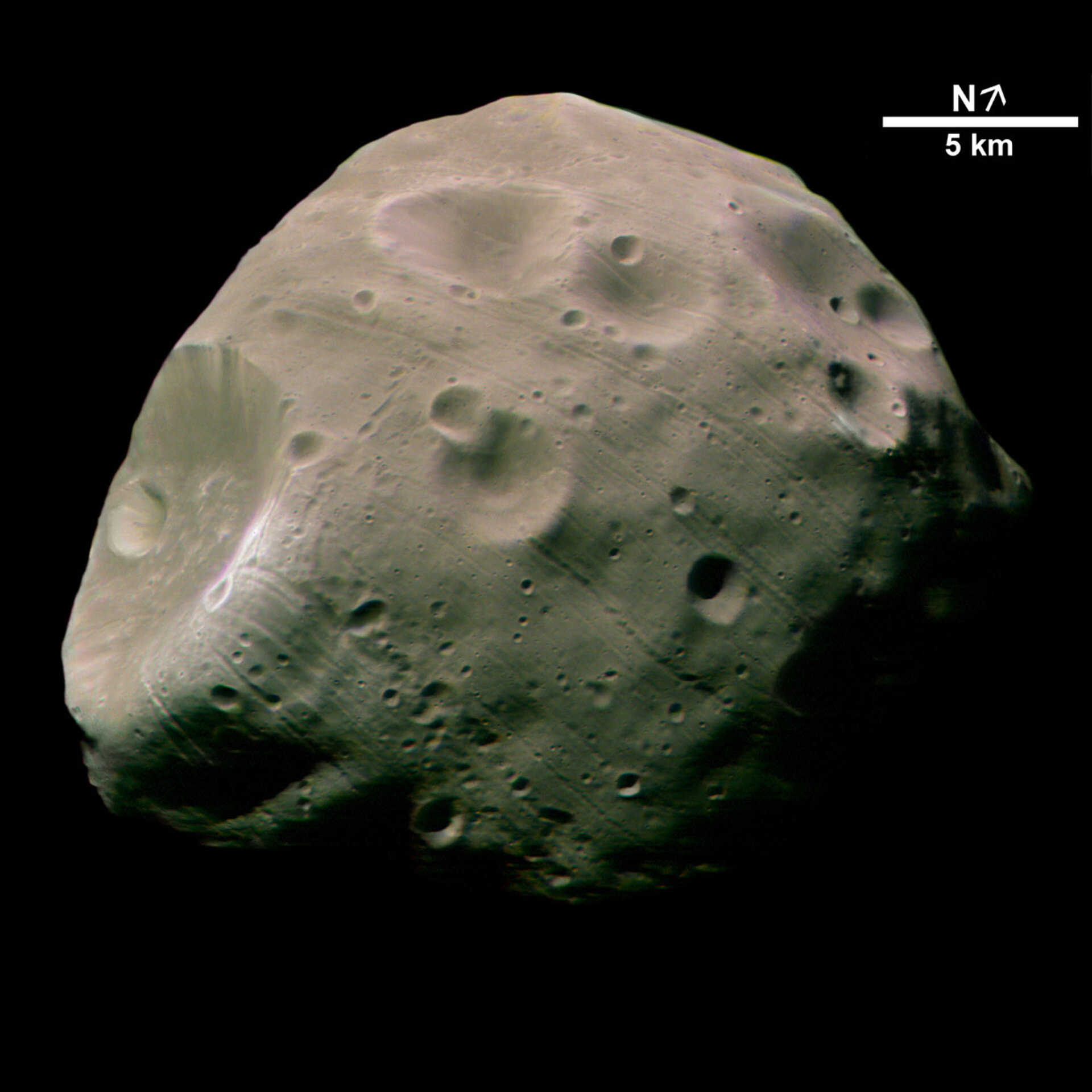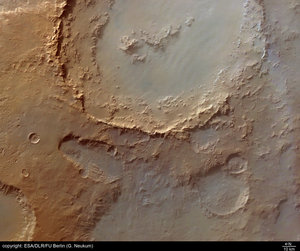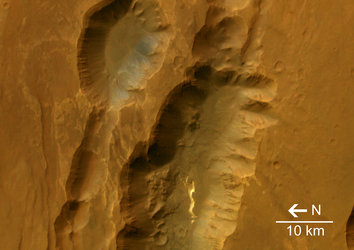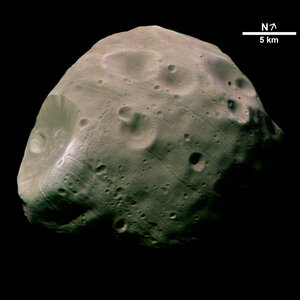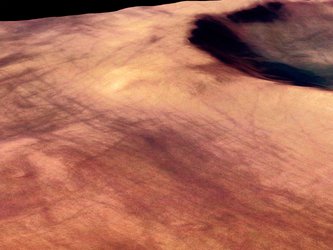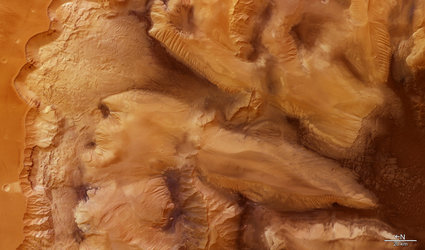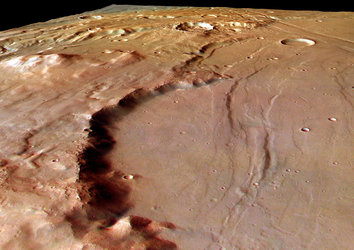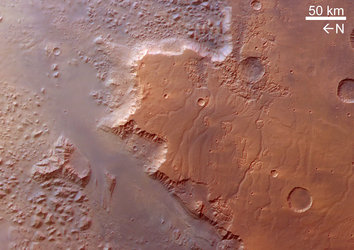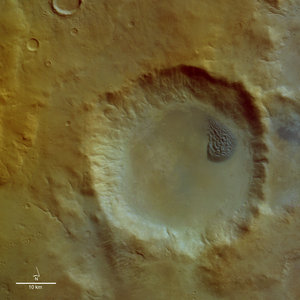Martian moon Phobos in detail
These images, taken by the High Resolution Stereo Camera (HRSC) on board ESA’s Mars Express spacecraft, are Europe’s highest-resolution pictures so far of the Martian moon Phobos.
These HRSC images show new detail that will keep planetary scientists busy for years, working to unravel the mysteries of this moon. The images show the Mars-facing side of the moon, taken from a distance of less than 200 kilometres with a resolution of about seven metres per pixel during orbit 756.
Images of Phobos as shown here had already been taken at lower resolution in previous orbits (413, 649, 682, 715 and 748). In the coming months, these first pictures will be followed by a series of images taken in subsequent fly-bys.
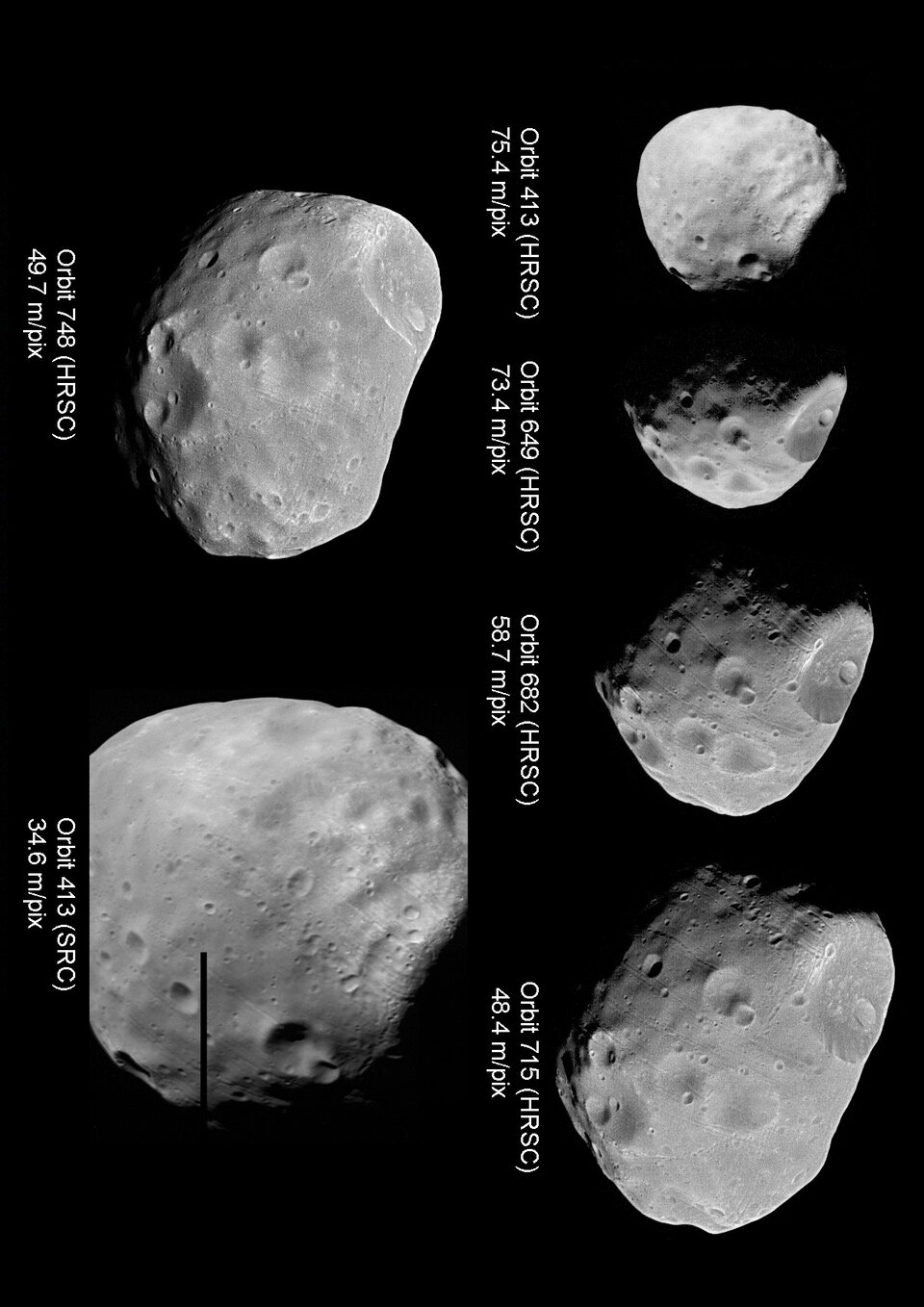
The Mars Express spacecraft periodically passes near Phobos about one hour before it flies at an altitude of only 270 kilometres above the Martian surface, just above the atmosphere. Within minutes, the orbiting spacecraft turns from its attitude where it points at Mars to train its camera on this little world.
The HRSC provided an unprecedented near-simultaneous group of 10 different images of the surface, enabling the moon's shape, topography, colour, ‘regolith’ light-scattering properties, and rotational and orbital states to be determined. The regolith is the small-grained material covering most non-icy planetary bodies, resulting from multiple impacts on the body’s surface.
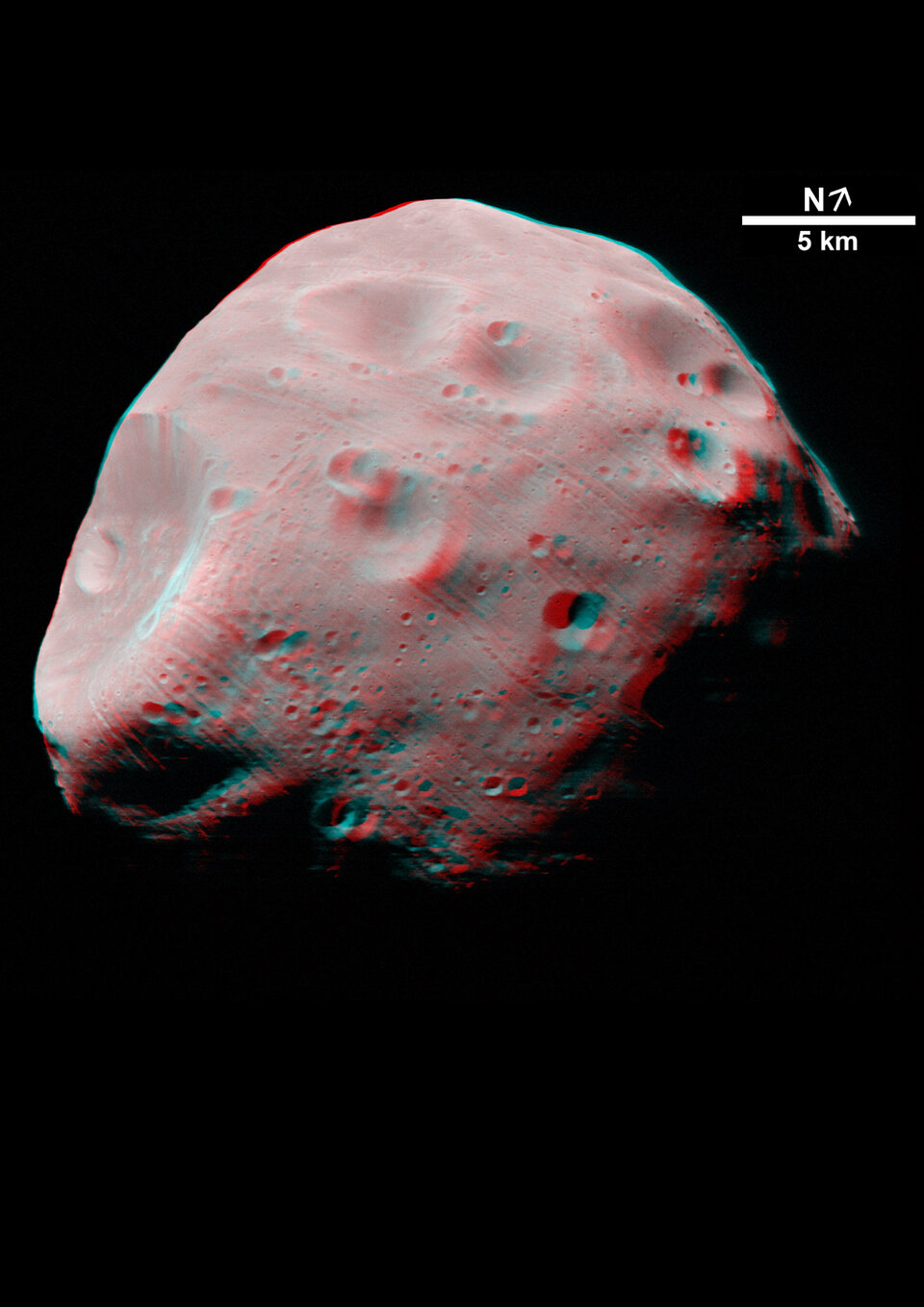
These images have surpassed all previous images from other missions in continuous coverage of the illuminated surface, not blurred and at the highest resolution. The US Viking Orbiter obtained a few small areas sampled at an even higher resolution of a few metres per pixel, but these were not so sharp due to the close and fast fly-by.
The global ‘groove’ network is seen in sufficient detail to cover the Mars-facing surface continuously from near the equator up to the north pole with regular spacing between the grooves. It now may be possible to determine whether the grooves existed before the large cratering events, and exist deep within Phobos, or came after the cratering events and were superimposed on them.
Much more detail is seen inside the various-sized craters, showing some with marked albedo variations. Some craters have dark materials near the crater floors, some have regolith that slid down the crater walls, and some have very dark ejecta, possibly some of the darkest material in our Solar System.
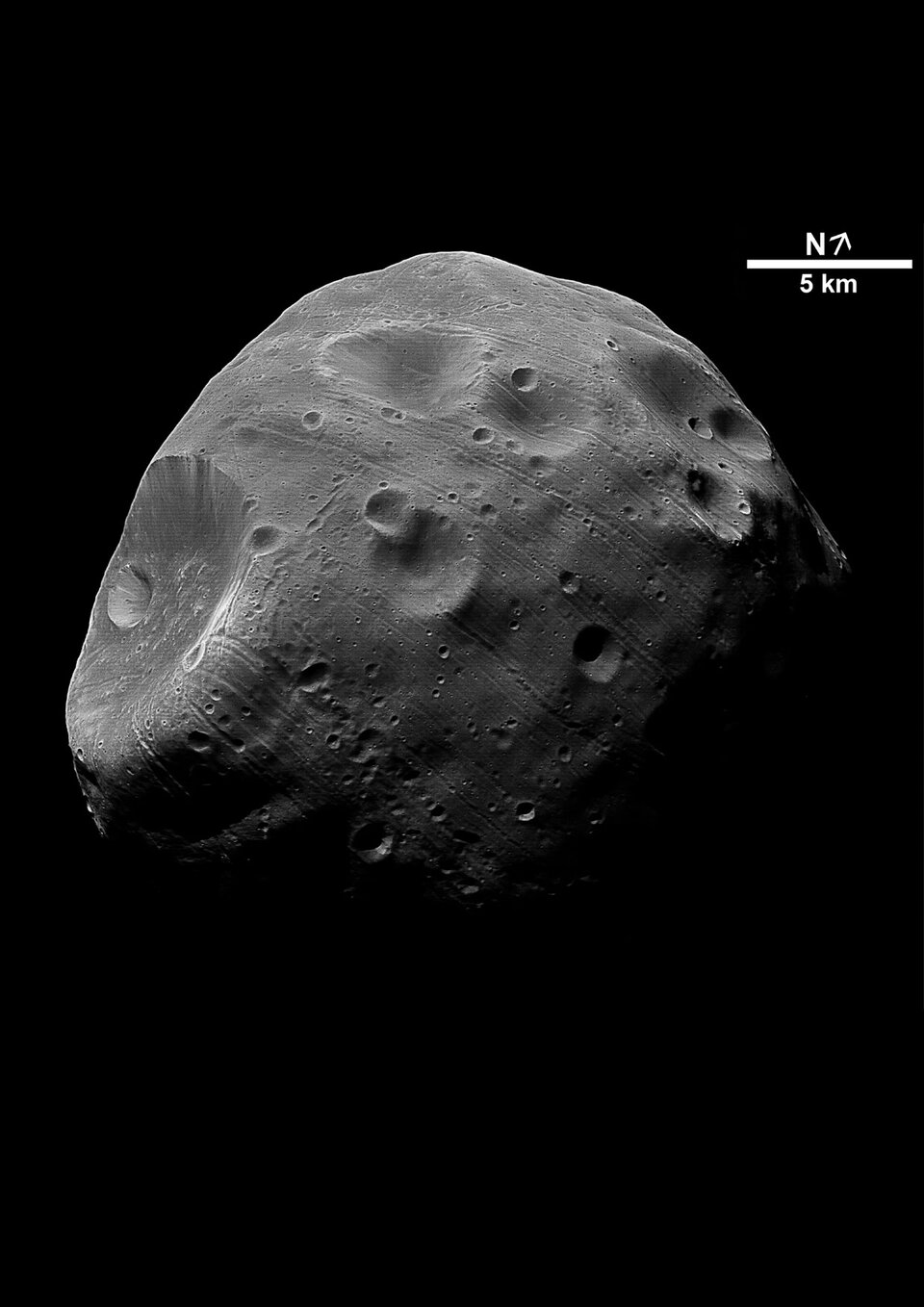
This tiny moon is thought to be in a ‘death spiral’, slowly orbiting toward the surface of Mars. Here, Phobos was found to be about five kilometres ahead of its predicted orbital position. This could be an indication of an increased orbital speed associated with its secular acceleration, causing the moon to spiral in toward Mars.
Eventually Phobos could be torn apart by Martian gravity and become a short-lived ring around Mars, or even impact on the surface. This orbit will be studied in more detail over the lifetime of the Mars Express.
The 3D anaglyph image was generated from a combination of the nadir and the blue channel. The colour image was calculated from the three colour channels and the nadir channel. Due to geometric reasons the scale bar is only valid for the centre of the image.
For more information on Mars Express HRSC images, you might like to read our updated 'Frequently Asked Questions'.


